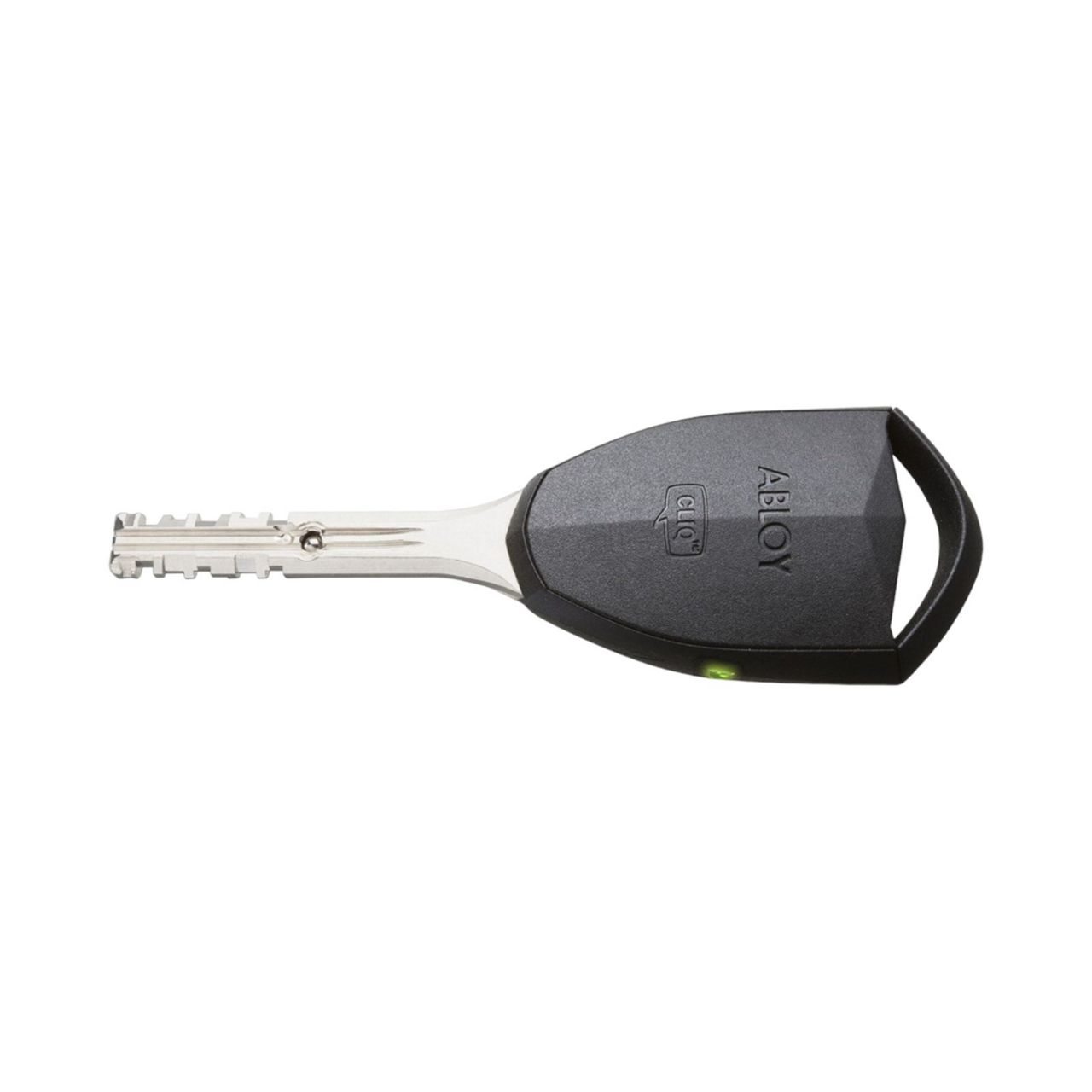Specification Statement
The Keying System should use a rotating disc technology and symmetrical key with a patent life of until at least 2031.
Technical Information
CLIQ Key Material: The key has a metal shaft and a plastic bow. The CLIQ electronics is located under the plastic cover.
Active / Passive Key: Active
Symmetrical / Asymmetrical Key: Symmetrical
Disc Quantity: 9
CLIQ Key Indications: The key electronics contains a small buzzer and a LED on both sides of the key that provide the key holder with an audible and visual access indication.
1 short beep and green light
The key is granted access
3 short beeps and red flashing light
The key is denied access
3 long beeps and flashing light
The battery may be low or cold (try warming the key in your hand)
No beep and no light
The battery is empty
CLIQ Key stampings
Key identification stampings are made on the key. One of identifications is a globally unique number.
CLIQ key battery
The battery powers the electronics in the key as well as in the cylinder.
The battery is located under a plastic cover.
Battery specifications:
3V lithium (type CR2450N).
Lifetime is about ten years or 100,000 key operations. CLIQ Connect keys will have a battery lifetime of about one year.
The battery must be replaced when the key starts to indicates low battery. It is possible to make around 50 key operations until the battery is empty once the low battery warning is given.
Speed of the electronic function
CLIQ cylinders can be operated 0.1 seconds after key insertion. A visual and audible indication is given to the key holder when the key can be turned.
Environmental restrictions for use
Use temperature: key -20°C …+70°C
Use temperature: cylinder -30°C …+70°C
Dust and water protection
Cylinder: IP classification IP 51 (= limited amount of dust can enter the cylinder, and it is protected against water drops coming directly vertically). Cylinders can be ordered with a dust cover to protect the keyway from dust and water (IP54).
Key: IP classification IP 57 (= limited amount of dust can enter the key, and it is protected against water).
Padlock (SWP): IP classification IP 68 (= dust tight and hermetically sealed).
330 series padlocks are also available with an automatic dust cover to protect the keyway from dust and water (IP54).
Tests for keys and cylinders
Mechanical Tests
EN 60 068:
Vibration - sinusoidal
Shock, weight bench 2J
Shock, hammer
Vibration: made with sand machine
Free Fall Key 5m, 2 times / test
Free Fall Key 1.5m, 10 times / test
Free Fall Lock, 1 m, 2 times / test
EN 60 529:
IP Class, Dust and Water
Keys IP57
Locks IP51
SWP padlocks IP68
Cylinders and 330 series padlock with an automatic dust cover IP54
Durability
EN 1303:
100,000 cycles, grade 6
Key Strength 2.5Nm in lock
Temperature and environmental tests
EN 60 068:
Dry Heat
Dry Heat, Thermal Shock
Cold
Cold, Thermal Shock
IEC 68-2-30:
Damp Heat, Cyclic
Extreme temperature shocks
ISO 9227:
Salt Spray Test (EN1670 grade 3)
Salt mist, cyclic, IEC 60068-2-52
Electrical tests & EMC
EN 61000:
Emission
Immunity
ESD
Electromagnetic field attack
High voltage attack
Magnetic field with permanent magnet
Failure, Misuse and Thief proof
20 Nm torque applied to the core
20 Nm torque applied to the electric disk
Alternating torque applied to the core
ATEX
CLIQ products are tested against the ATEX directive.
The entire keying system has to be ATEX approved. Old keying systems cannot to be converted to an ATEX system and ATEX systems cannot be converted to non ATEX system. ATEX keying system is slightly more expensive than normal CLIQ system due to the annual ATEX audit and slightly modified production lines.
CLIQ ATEX products are approved:
Ex ib IIC T4 (for gas)
Ex ibD 21 T135 (for dust)
ATEX approved keys are marked with EX stamping.
Lifetime of the products
The expected lifetime of the electronic products is about seven years. After that the failure rate of any electronic products starts to grow due to deterioration of electronic components and overall wear.



